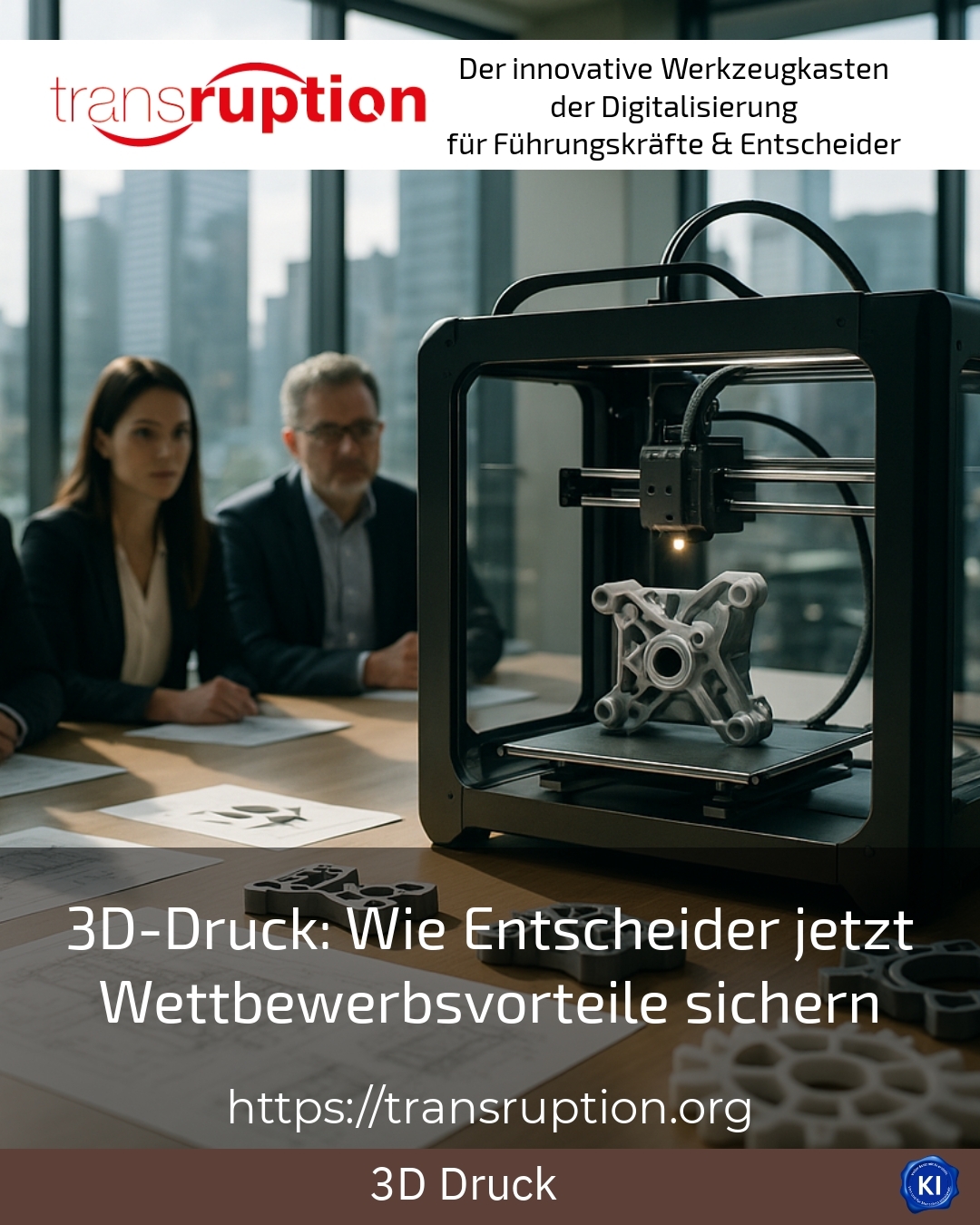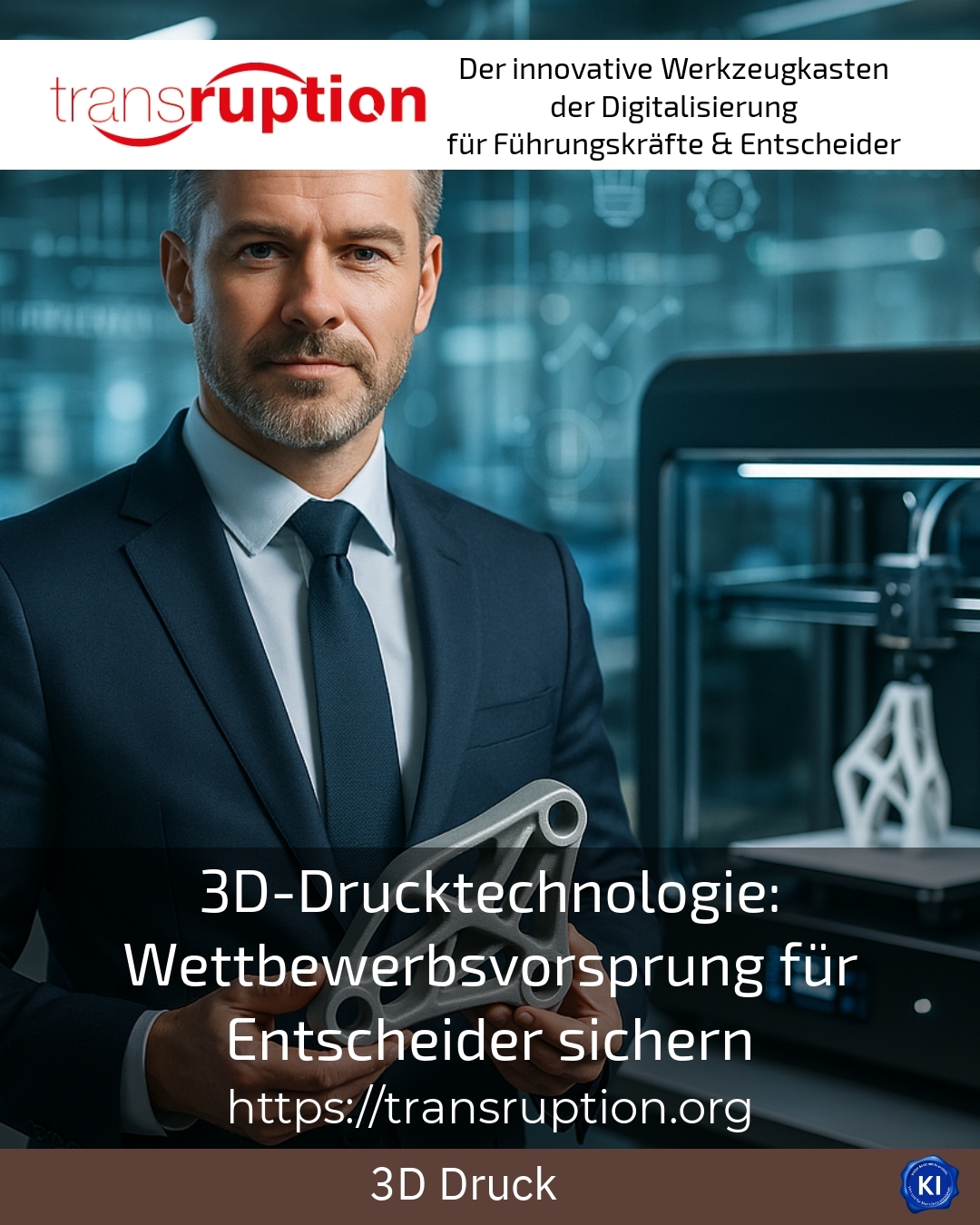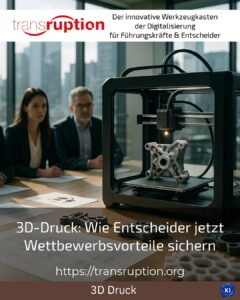3D printing technology** is increasingly revolutionising industrial production and has long been more than just a trend. It enables companies to significantly increase their competitiveness by optimising processes, making supply chains more flexible and implementing innovative product designs. Today, key executives recognise **3D printing technology** as the key to securing a competitive edge in the dynamic market environment and consolidating their position in the long term.
Flexibility and cost control through additive manufacturing
The ability to manufacture components on demand and directly on site takes traditional production to a new level. Companies not only reduce storage and transport costs, but also avoid the risks associated with global export restrictions and supply bottlenecks. Manufacturers in the automotive industry, for example, report that thanks to **3D printing technology** they can produce spare parts at short notice and reduce expensive inventories. Mechanical engineering companies are also taking advantage of the fact that they can produce small batches quickly and cost-effectively without having to manufacture expensive tools or fulfil minimum quantities. One major advantage is the reduction in prototyping lead times, which speeds up development cycles and enables rapid customisation.
This enables a medium-sized company in the medical technology sector, for example, which manufactures complex and customised implants, to develop new solutions more quickly and respond to market requirements. Manufacturers of consumer goods are also recombining designs and functionalities so that their products remain unique and better fulfil customer needs.
BEST PRACTICE at the customer (name hidden due to NDA contract) A leading automotive supplier has used 3D printing technology to reorganise its spare parts supply for components that are rarely in demand. As a result, it can now dispense with warehousing and save on expensive storage space, while the availability of parts is guaranteed at all times.
Innovative product design as a competitive advantage
3D printing technology** opens up completely new design possibilities that are almost impossible to realise using traditional methods. Complex geometries, lightweight constructions and customisable products can now be produced easily thanks to modern software and high-performance printing processes. In aircraft construction, this results in components that are not only lighter but also more stable - and therefore reduce fuel consumption. In jewellery and fashion design, the trend towards personalised one-off items that reflect individual customer needs is gaining ground.
Electrical engineering companies benefit from the fact that they can combine complete components into ready-to-use functional units and achieve reduced assembly times. This not only increases productivity, but also the ability to innovate.
BEST PRACTICE at the customer (name hidden due to NDA contract) a manufacturer of innovative consumer electronics uses 3D printing technology to produce housings with an integrated cooling system. These designs were almost impossible to produce using conventional methods, but enable significant performance gains and differentiation on the market.
3D printing technology for agile development and customisation
By eliminating the need for complex tools and moulds, additive manufacturing offers unprecedented flexibility in small series production. Companies can therefore easily produce samples, test new products and experiment with variants without risking large investments. This is particularly attractive for innovative start-ups and SMEs.
In the dental sector, practice networks use 3D printing technology to quickly produce customised dental prostheses with the highest standards of accuracy of fit and aesthetics. Manufacturers of durable consumer goods also benefit from the ability to print spare parts on demand, thereby significantly increasing customer satisfaction.
BEST PRACTICE at the customer (name hidden due to NDA contract) an agency for customised orthopaedic technology has halved the production times of its customised foot orthoses by introducing 3D printing processes, thereby significantly increasing patient loyalty.
Important tips for decision-makers during implementation
To make the introduction of **3D printing technology** a success for companies, a step-by-step strategy is recommended. Firstly, different 3D printing processes and material properties should be tested in order to identify the optimal area of application. External service providers can help to gather practical experience for initial projects without requiring large investments.
Integration into existing digital processes is also important, for example by connecting to CAD systems or ERP software. It is also worth involving and training employees at an early stage so that the potential of the technology can be fully utilised.
Specialist consultancies support the transition in order to minimise risks and ensure that technical, economic and organisational aspects are coordinated. Clients often report that even difficult projects relating to the introduction and scaling of 3D printing solutions succeed in this way.
My analysis
3D printing technology** is no longer just a concept for the future, but is firmly established as a means of increasing efficiency and flexibility in production. With its many advantages, from rapid customisability to material efficiency, it offers decision-makers a valuable competitive edge. The technology not only supports innovative product developments, but also relieves the burden on supply chains and significantly reduces storage costs. Companies that accompany and strategically shape this change strengthen their market position and ensure long-term success in an increasingly complex environment.
Further links from the text above:
[1] 6 underestimated benefits of 3D printing for your supply chain
[2] What are the advantages of 3D printing?
[3] Advantages of 3D printing for small businesses
[4] The pros and cons of 3D printing
[5] Advantages of 3D printing
[6] 3D printing for companies: Which is more worthwhile?
[7] 25 (unexpected) applications for 3D printing
[8] Advantages of 3D printing
[9] 3D printing in industry: advantages and areas of application
[10] Industrial 3D printing: The big expert survey
For more information and if you have any questions, please contact Contact us or read more blog posts on the topic TRANSRUPTION here.
















